
|

|
|
Home Site Search Contact Us Subscribe
|
|
More Heart and Soul than Ever Before: 15th Venice Architecture Biennale "Reporting from the Front" Architecture alone cannot change the world, but the issues that populate this year's Biennale, as curated by Alejandro Aravena, explore how we are all responsible for making an effort. By Johannes M.P. Knoops, FAAR, Assoc. AIA June 23, 2016 The 15th Exhibition of Architecture – La Biennale Venezia, more commonly known as the Venice Architecture Biennale, opened to the public with unparalleled intent and sincerity, thanks to the deeply-principled Alejandro Aravena as its 2016 director. In addition to this opportunity to compose the Biennale’s global message, he was also recognized as the 2016 Pritzker Prize laureate. He was praised by the Pritzker jury, which stated: “His built work gives economic opportunity to the less privileged, mitigates the effects of natural disasters, reduces energy consumption, and provides welcoming public space.”
Rem Koolhaas, the 2014 director, undermined the necessity of starchitects populating the Biennale with an agenda that focused us back on the essential and categorical elements of architecture. Aravena takes us one step further away from the celebrities to deliver more heart and soul than one can imagine for such a global gathering.
In the United States, we are besieged with the literal LEED (Leadership in Energy and Environmental Design) checklists. Some might say it serves as a means to measure some moral accountability in our architecture. But I am led to believe, thanks to this thought-provoking Biennale, that morality is more than an itemization of attributes. Most of the moral aspirations represented in Venice are not so easily quantified. Granted there are earnest examinations of green technologies and practices in several of the installations, but there are numerous heart-wrenching issues that face a global community of architects wading in the waters of 21st-century politics and issues.
Migrant populations, displaced refugees, political victims, collapsing urban economies, climate mutations, disfigured environments, inequalities, crumbling social foundations – and let us not overlook the lack of beauty and sense of community – are just some of the issues that populate both the Arsenale and Central Pavilion as curated by Aravena. He has included 88 participants from 37 countries in his purview. In addition, there are an impressive 63 National Pavilions located in the Giardini (Biennale gardens) and woven throughout the historical fabric of Venice. If that isn’t enough to fill your itinerary for several days, various collateral venues offer notable exhibitions under the Biennale stewardship.
When discussing the choice of this year’s image for the event, Biennale Chair Paolo Baratta articulated this Biennale’s essential theme: “What does the lady see? I think mainly desolated land comprising immense swathes of human habitation, which no human could be proud of; great disappointments representing a sad, infinite number of missed opportunities for humanity’s ability to act intelligently. Much of this is tragic, much is banal, and it seems to mark the end of architecture. But she also sees signs of creativity and hope, and she sees them in the here-and-now, not in some uncertain aspirational, ideological future.”
To further clarify the intent, Aravena stated: “Given the complexity and variety of challenges that architecture has to respond to, ‘Reporting from the Front’ will be about listening to those who were able to gain some perspective and, consequently, are in the position to share some knowledge and experiences with those of us standing on the ground.”
Open to the public through November 27, 2016, “Reporting from the Front” offers us an opportunity to ponder these various topics. In doing so, we may take an accounting of our own responsibilities in addressing these critical and humane issues. Architecture alone cannot change the world, but we are all in our own way responsible for making an effort.
Recipients of this year’s Biennale honors:
Golden Lion for Best National Participation: Spain: “Unfinished,” curated by Carnicero + Quintans (Giardini) Rather than celebrating completed work, the exhibition explores open-ended constructs that embrace an ability to evolve, adapt, and transform over time.
Golden Lion for Best Participant: Gabinete de Arquitectura (Solano Benítez; Gloria Cabral; Solanito Benítez), Paraguay: “Breaking the Siege” (Central Pavilion, Giardini) This provocation uses ubiquitous brick, mortar, and unskilled labor in an ingenious manner to bring architecture to underserved communities.
Silver Lion for a Promising Young Participant: Kunlé Adeyemi/NLÉ: “Makoko Floating School” (Gaggiandre – Arsenale) Addressing the rapid urbanization, lack of land, and rising water levels in Nigeria, the school poetically floated into place along side the Arsenale while lyrically reminding us of Aldo Rossi’s floating theater of 1979. [Editor’s note: On June 7th, the original school in Lagos, Nigeria, collapsed in a rain storm.]
Special Mentions for National Participation: Japan: “en : art of nexus,” curated by Yoshiyuki Yamana (Giardini) In light of a now long-past economic boom and recent natural disasters, Japan presented singular responses to individual topics to imply that there is no one answer.
Peru: “Our Amazon Frontline,” curated by Sandra Barclay and Jean Pierre Crousse (Sale d’Armi – Arsenale) Knowing we are all familiar with the potential loss of the Amazon rainforest and its associated global implications, the subject touches us here on a human scale as issues of education and cultural erasure in Peru’s youth are brought to light.
Golden Lion for Lifetime Achievement: Paulo Mendes da Rocha, Brazil. Jury comment: "He is a nonconformist challenger and simultaneously a passionate realist. His fields of interest are beyond architecture.”
Rooted in his native New York, Johannes M.P. Knoops, FAAR, Assoc. AIA, often speculates on urban narratives both locally and abroad. Honored with a Rome Prize, Architectural League of New York Prize, Dinkeloo Traveling Fellowship, and Van Alen Traveling Fellowship, he is a tenured associate professor at FIT/SUNY, where he shares his passion for a design’s ability to communicate meaning.
Also by Knoops: The Great Compilation: 14th International Exhibition of Architecture di la Biennale di Venezia Rem Koolhaas has irrevocably changed the Venice Biennale's focus away from starchitects to architecture itself. Indeed, I left impressed and invigorated, but curious as to what might follow. |
(click on pictures to enlarge) 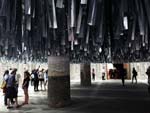 Johannes M.P. Knoops Entry to the Arsenale, designed by Alejandro Aravena’s firm Elemental, and fabricated from the metal studs and sheetrock repurposed from the 2015 Biennale. 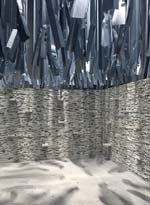 Johannes M.P. Knoops Detail of repurposed sheetrock walls in Elemental’s Entry to the Arsenale.  Johannes M.P. Knoops Golden Lion for Best National Participation: Spain Pavilion: “Unfinished” (Giardini) 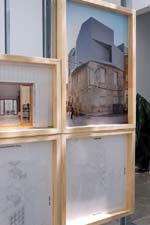 Johannes M.P. Knoops Spain Pavilion: “Unfinished” 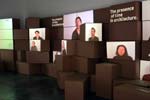 Johannes M.P. Knoops Spain Pavilion: “Unfinished” 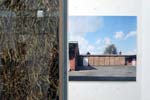 Johannes M.P. Knoops Spain Pavilion: “Unfinished” 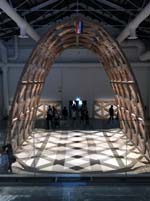 Johannes M.P. Knoops Golden Lion for Best Participant: Gabinete de Arquitectura, Paraguay: “Breaking the Siege” (Central Pavilion, Giardini) 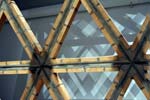 Johannes M.P. Knoops Gabinete de Arquitectura, Paraguay: “Breaking the Siege” 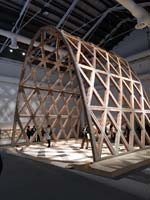 Johannes M.P. Knoops Gabinete de Arquitectura, Paraguay: “Breaking the Siege”  Johannes M.P. Knoops Silver Lion for a Promising Young Participant: Kunlé Adeyemi/NLÉ: “Makoko Floating School” (Gaggiandre – Arsenale) 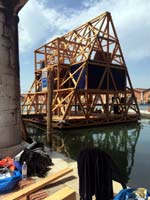 Johannes M.P. Knoops Kunlé Adeyemi/NLÉ: “Makoko Floating School” 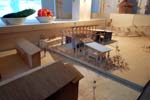 Johannes M.P. Knoops Special Mention for National Participation: Japan Pavilion “en : art of nexus” (Giardini) 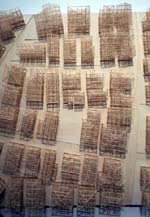 Johannes M.P. Knoops Japan Pavilion “en : art of nexus” 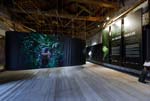 Courtesy La Biennale di Venezia Special Mention for National Participation: Peru Pavilion: “Our Amazon Frontline” (Sale d’Armi – Arsenale) 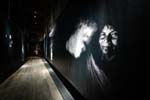 Courtesy La Biennale di Venezia Peru Pavilion “Our Amazon Frontline” 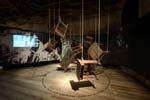 Courtesy La Biennale di Venezia Peru Pavilion “Our Amazon Frontline” 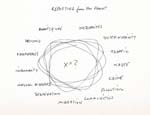 Courtesy La Biennale di Venezia “Battle Words” by Alejandro Aravena 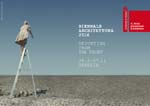 Courtesy La Biennale di Venezia 2016 Biennale poster |
© 2016 ArchNewsNow.com